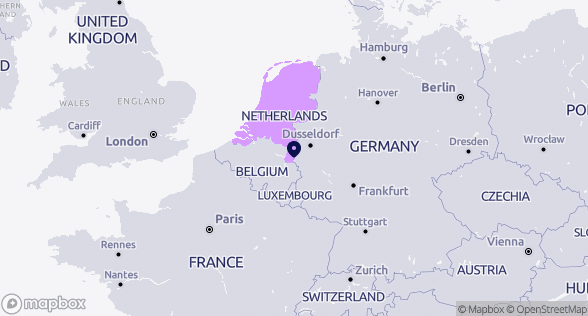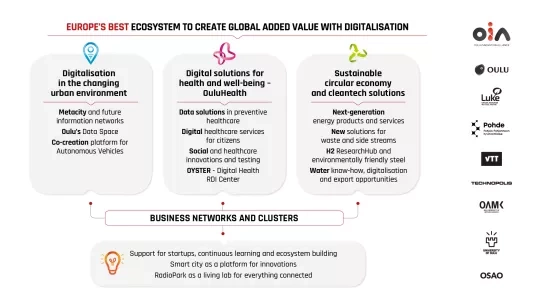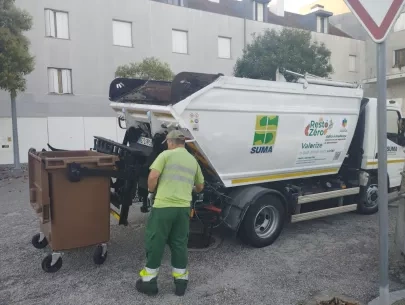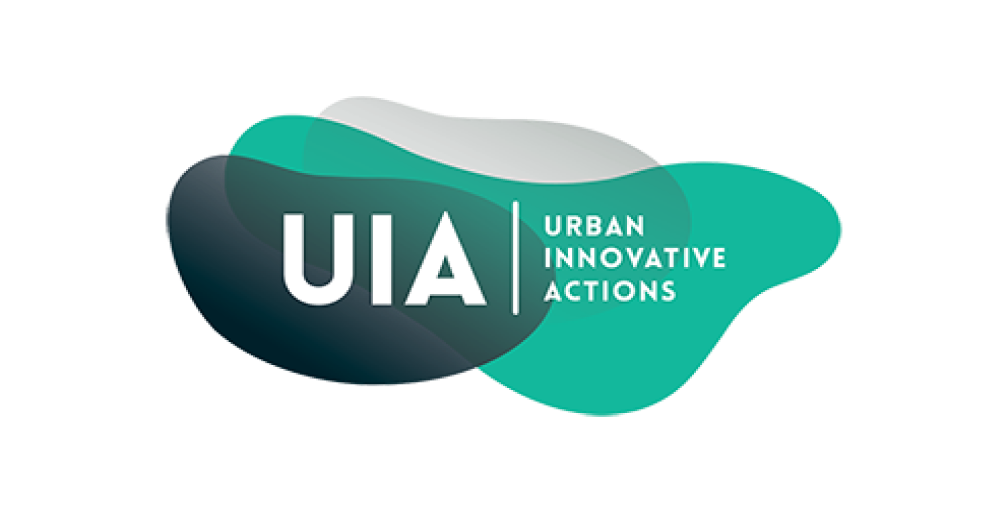
Kerkrade
Netherlands
Super Circular Estate - Kerkrade
The demolition of residential buildings has historically resulted in a loss of residents and social cohesion, in the downcycling of recovered materials of low (or no) market value, as well as in high environmental costs through lost embodied carbon. The embodied carbon in new raw materials adds to the losses. Super Circular Estate, a project running in Kerkrade in the region of Parkstadt Limburg, sought to mitigate these losses by:
- Exploring material circularity and reuse options in new construction by ‘deconstructing’ an existing 1968 10-storey apartment block and harvesting its materials to construct three demonstrator homes in the same neighbourhood using different reuse/recycle techniques and using up to 75%-100% of the recovered materials. Demolition and construction took place simultaneously, with the demolisher supplying the building contractor with the materials harvested from deconstruction. Super Circular explored several material and circularity and reuse options for the new buildings via a material inventory bank and developed several new managerial and technological techniques and spin-off construction products (circular concrete, a new type of brick, etc.).
- Maintaining social cohesion during demolition, relocation and reconstruction processes by involving residents and having the former residents return to live in the new dwellings to preserve local social cohesion.
Super Circular is to be followed up with the renovation of a second apartment block in the same neighbourhood. This second block will be given a new ‘social plinth’ otherwise known as an active ground-floor community area. It will be equipped with new facilities to enhance the liveability of the building.
This is a case study as part of an UIA report. You can access all of the project's resources on its project collection page.
2. Kerkrade and Just and Green Transitions
2.1 What are the implications for Kerkrade?
The region of Parkstad Limburg, where the city of Kerkrade is located, is composed of 8 municipalities and is home to almost 250,000 inhabitants, of which almost 90,000 live in the municipality of Heerlen. The region has experienced deep economic restructuring. Mine closures left about 45,000 unemployed. Several national and regional government measures to mitigate the loss of jobs and wealth and to build a new economic future have been implemented over recent decades. Nonetheless, two major challenges have persisted:
- Despite these measures, since the mid-1990s, economic stagnation has been accompanied by population loss and ageing, decreasing household size, relatively low birth rates, high death rates and the outward migration of young people. Parkstad Limburg’s population will decrease further from 238 684 in 2008 to about 223 000 in 2025 with predictions of a further 27% contraction in the next 30 years. Kerkrade predicts a 10% shrinkage in its population over the next 10 years.
- Employment-generating institutes like Statistics Netherlands (CBS) and the pension fund Algemeen Burgerlijk Pensioenfonds were moved to the region. However, the mismatch between the white-collar employment and the blue-collar labour force has contributed to persisting unemployment.
These demographics imply that Kerkrade will need less housing accommodation in the forthcoming decades. High-rise apartment buildings, which were mainly built in the 1960s and 1970s, when housing shortage was a primary issue, no longer satisfy market or inhabitants’ needs and are listed for demolition.
Housing is a key challenge for Kerkrade and its region. Though vacancies are limited, overcapacity, a mismatch between supply and demand, and a lack of upkeep have led to falling property values, especially in the lowest-value section of the owner-occupied stock. In this context, some inexpensive rental dwellings owned by housing associations and occupied by low-income households are being demolished. While this is happening, falling house prices in the owner-occupied sector does little to enhance accessibility for low-income groups who have limited access to loans. The selective demolition of rental housing is inevitably increasing the concentration of poverty in the remaining ‘shrinking’ social rental sector — in other words, more low-income people are chasing fewer homes. At the same time, newly built housing mainly attracts long-term residents, in many cases pensioners looking for more age-friendly housing.
Managing the spatial and social consequences of urban shrinkage is essential for the just transition in the region. In this regard, there are opportunities to seize in terms of developing a circular economy specialised in the reuse of the excessive housing stock and circular construction can be aligned with goals of spatial and social equity. Historically, demolishing buildings has negative social impacts and wastes materials. Demolition shrinks communities and needlessly increases the material resources used. According to data from the Dutch Ministry of Infrastructure 89% of materials coming from the construction sector is made up of ‘mineral’ waste such as brick, concrete, & ceramic tiles and 11% is metal, wood etc. 98% of the mineral waste in the Netherlands is traditionally downcycled and reused as a road base aggregate.
Faced with this situation, the Dutch government has set out a national goal of developing a circular economy by 2050 and reducing the use of primary raw materials by 50% by 2030. Since its 2016 “Government-wide programme for a Circular Economy in the Netherlands by 2050” the Dutch government has supported the design of products and buildings in a way that permits reuse and reduces value losses and harmful emissions. Super Circular Estate in Kerkrade is a step in the path to delivering this vision.
2.2 What barriers has Kerkrade faced implementing the just & green transition?
Low income and unemployment are prevalent among certain social groups and continues to be a significant barrier to the just transition in the housing sector. These groups tend to concentrate in the most degraded and energy-inefficient housing stock, which is also the most common target for demolition. This can give rise to a trade-off between sustainability and social inclusion. If new builds are unaffordable for these groups, they will be marginalised in the most unsustainable housing, This merely perpetuates conditions of vulnerability and heightened exposure to energy poverty for some.
The Dutch government is committed to the circular economy and is developing policies. Nonetheless, there is a certain policy ‘blank page’ in the detail because this is a ground-breaking policy. There is still a lot to do in terms of policy detail, financial incentives (including carbon pricing), and technical standards (including their ability to recognise and evaluate the environmental costs of prevailing linear economy approaches). This makes the construction of circular buildings very difficult for both the public and private sectors. In addition, there are no standards for ‘circular building procurement.’ At this early stage in the development of these technologies, any such standards would have to consider the flexibility that enables the essential technological innovation to continue, and any health and safety or other parameters where norms may be needed.
Another reality stemming from what is an emerging technological and policy area, is that both public and private sectors are being called upon to adopt a circular construction approach ‒ which requires a radically new mindset.
3. How does Super Circular promote the just & green transition?
Super Circular Estate explored just transitions approaches through three mechanisms:
- Rethinking relocation. If poorly conceived and managed, relocation can have damaging impacts on both the sometimes already vulnerable households and on the social cohesion of entire neighbourhoods. Therefore, the city involved the inhabitants, the social housing association, and other partners in the decisions about which buildings to demolish. Then, to prevent displacement, the city asked them if they would be interested in returning to the neighbourhood once the new housing was built (14 people out of 400 were interested and 6 applied). Relocated residents were also guaranteed an alternative dwelling under the same conditions in another area of Kerkrade, plus a relocation package. The residents who accepted to live in the new circular housing projects were guaranteed the same rents, or if the rent was higher, they received a national subsidy offsetting the increase.
- Building a new social plinth within a second apartment block. This second block will be renovated and transformed into 110 flats after the completion of Super Circular Estate. The plinth was built using materials harvested from the area. It incorporates shared facilities, and leaves space to future residents to create desired services, such as communal cooking, laundry facilities and cultural activities. This investment, and its participative dimensions, are aimed at keeping the community together, including at a moment of transformation. The aim is to reduce the negative impacts of demolition and relocation.
- A proof of concept (PoC) for circular construction. The PoC was developed through pilot housing units, which enabled partners to examine the feasibility and costs of building circular homes. Key data on the success factors for sustainable housing construction systems was gathered. The data will help with rolling out circular construction in other areas in the Parkstadt Limburg region and in other ‘shrinking’ areas. The project found that 75% of construction material can be reused in such a project and energy consumption is reduced by 34% compared with standard construction methods. However, the costs are higher than for standard construction. This is currently preventing the competitiveness of such a solution on the market (assuming current carbon pricing remains constant).
4. Keys to success
a. A strong partnership
The project coalition included:
- the municipalities of Kerkrade, Landgraaf and Brunssum
- the Stadsregio Parkstad Limburg regional authority
- two construction companies
- two water management infrastructure providers
- two higher education and research institutes
- a social housing corporation
- advocacy specialists.
Super Circular was a highly experimental effort of great socio-technical complexity. The variety and close coordination of all its partners, from covering the management of relocation to the construction site, was determinant and is a pre-condition of further efforts of this kind.
b. Managing uncertainty
Uncertainty regarding the process of deconstruction and the time and the effort needed to refurbish/remanufacture components using novel techniques caused delays. Project leaders should undertake full prior assessments of quality and process aspects to increase efficiency in terms of project duration and reduce costs.
c. Embedding lessons learnt into future circular planning
The principal obstacle to the circular deconstruction of the buildings and its components was in the way the buildings had been constructed. At the time of their construction, the buildings were not assembled with the aim of one day recovering and reusing the materials used. It is therefore crucial to build new circular buildings with recovery and reuse in mind.
d. Communicating with the residents
Regular communication with existing and former residents helped them to engage in the transformation of their neighbourhood. This contributed to social cohesion, the positive image of the neighbourhood, and the return of some residents.
5. Scaling up and replication potential
The replication potential of Super Circular is very high in all territories which have a large inventory of collectively managed housing and which are experiencing urban shrinkage and depopulation. Super Circular Estate offers valuable, new information on the cost structure and technological challenges of producing circular homes. Replication efforts can utilise this knowledge. However, as things stand, the Super Circular Estate project has proven that building circular homes is more costly than building homes in traditional linear ways.
The technologies developed during the SCE project have been applied in the construction of 15 new apartments using a demountable prefabricated concrete system made with recycled concrete.
A second spin-off project involves the partial refurbishment of half of a 10-story housing block and the construction of 114 new circular apartments in the other half of the same block. This project will serve as a best practice example for approximately 1,250 similar dwellings in the Parkstad Limburg region.
References
Durmisevic, Emma (2018), The Super Circular Estate project Journal n.1, Urban Innovative Actions: https://uia-initiative.eu/sites/default/files/2019-02/Kerkrade_Journal.pdf
Kasper, Hans and B.. V. Etil. (2012) “The aftermath of the closure of the Dutch coal mines in South Limburg: Regional economic and social reconstruction.” Maastricht University and Etil BV.
Koen Elzerman & Marco Bontje (2015) Urban Shrinkage in Parkstad Limburg, European Planning Studies, 23:1, 87-103, DOI: 10.1080/09654313.2013.820095
About this resource
The Urban Innovative Actions (UIA) is a European Union initiative that provided funding to urban areas across Europe to test new and unproven solutions to urban challenges. The initiative had a total ERDF budget of €372 million for 2014-2020.
Similar content






Want to replicate this urban practice in your city?
Apply to an EUI City-to-City Exchange
Connect with a peer city who can bring you solutions and expertise and apply together to receive EUI support
More infos on EUI websiteBrowse existing Innovative Actions looking for Transfer Partners and cities willing to do a City-to-City Exchange looking for peers